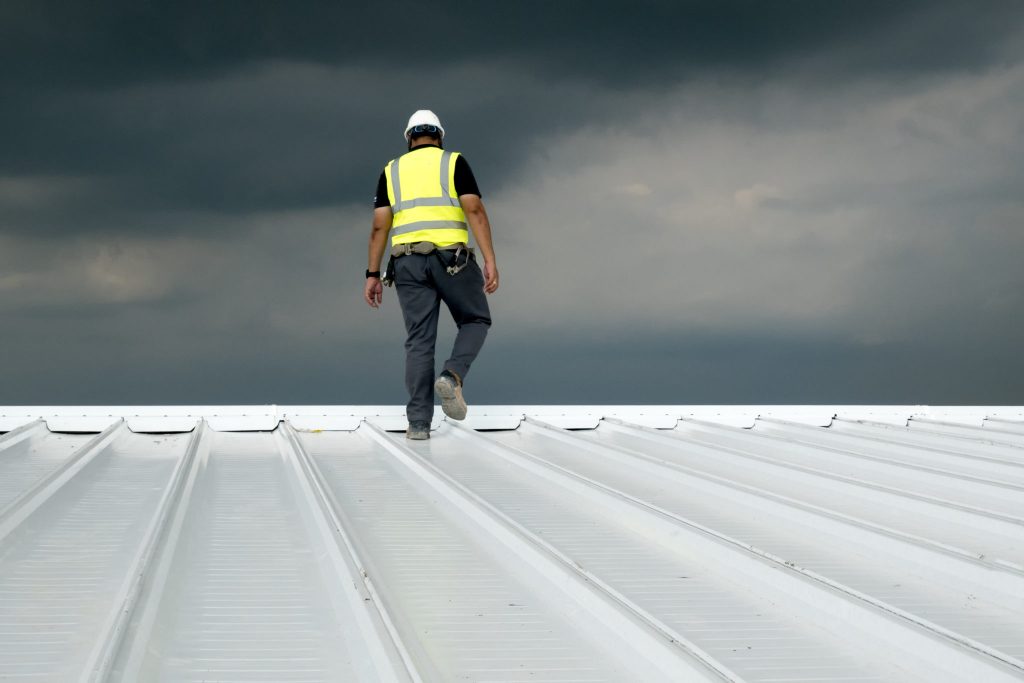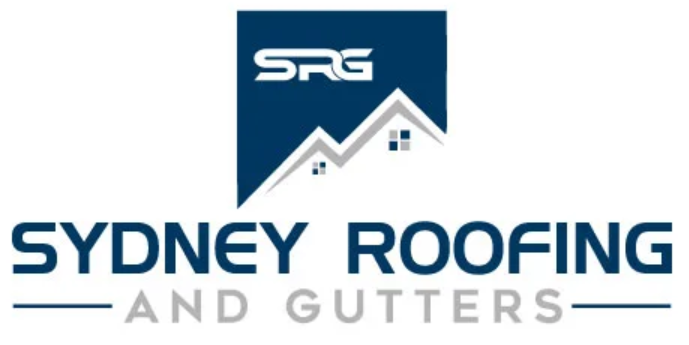How To Safely Inspect Your Roof After A Storm
After a storm, it’s important to inspect your roof for any possible damage. It isn’t always a simple process to comprehend the existing damage from the ground, It’s important to know how to safely inspect your roof.
Within this blog post, our goal the exploration the simplicity and how to safely inspect your roof after a storm. We will cover what to look for, how to get on your roof, and what to do if you find damage. Read on for everything you need to know about inspecting your roof after a storm.

What to look for when inspecting your roof after a storm
If you may be having suspicion regarding damage occurrence to the roof of your building or may suspect your property’s guttering system could have occurred damaged within a storm, it’s important to inspect it as soon as possible. The following steps are what to look out for when assessing the state of your properties roof:
-Missing or damaged shingles
-Shingles that are cracked, curled, or blistering
-Bare spots where granules have come off
-Leaks in the roof
-Gaps or holes in the flashing
-Damage to the chimney or vent pipes
If any signs of damage present themself, it’s important to contact a professional roofer for any residential or commercial roofing repairs. Trying to repair your roof yourself could result in further damage or even injuries.
Exterior Roof Inspection
After a storm, it’s important to inspect your roof for any damage that may have occurred. Here’s how to do it safely:
- If there are any loose or missing shingles, repair or replace them as soon as possible.
- Inspect the flashing around chimneys and vents to make sure it’s in good condition and not leaking.
- Check gutters and downspouts to ensure they’re clear of debris and functioning properly.
- Look for any signs of water damage inside your homes, such as stains on ceilings or walls.
- If you have any concerns about the condition of your roof, contact a professional roofing contractor for an inspection.
Interior Roof Inspection
After a storm, it’s important to inspect your roof for any damage that may have occurred. To do this safely, you’ll need a ladder and someone to help hold it steady. Once you’re up on the roof, carefully check for any missing or damaged shingles, as well as any holes or cracks in the roof. If you see any damage, make sure to call a professional roofer to come and take a look.
How to safely inspect your roof
It is important to inspect your roof after a storm to ensure that there is no damage. This can be done by hiring a professional roofing contractor, or by doing it yourself. When looking through your roof watch out for stepping in the correct place within your roof spaces.
If you choose to inspect your roof yourself, there are some safety concerns that you need to be aware of. First, always use proper safety gear when climbing on your roof. This includes a sturdy pair of shoes with good traction, and a belt or harness to help prevent falls.
Second, be sure to inspect all areas of your roof, not just the parts that are visible from the ground. Use a ladder or binoculars to get a closer look at hard-to-reach areas.
Third, take note of any damage that you see, and take photographs if possible. This will be helpful when filing an insurance claim or making repairs.
Fourth, if you suspect that there is serious damage, do not attempt to make repairs yourself. Call a professional for help.
Use binoculars from the ground
If you can’t get up on your roof to inspect it yourself, don’t worry – you can still check for damage from the ground using binoculars. Just make sure you’re using a stable surface to avoid injury, and take care to not drop the binoculars on your head or neck!
Start by scanning the entire roofline from one end to the other. Look for any missing or damaged shingles, as well as any loose or hanging debris. If you see anything that looks out of the ordinary, make a note of it so you can investigate further.
Next, focus on specific areas that may be more likely to have been damaged in the storm. This includes areas where tree branches may have made contact with the roof, as well as any low-lying areas that may have been inundated with water. Pay close attention to these areas and look for any signs of damage.
If you do spot something that looks like it could be a problem, don’t hesitate to call a professional contractor for an inspection. They’ll be able to tell you for sure whether or not there’s cause for concern and help you get your roof back in tip-top shape.
Check for debris
If your roof has been damaged by a storm, the first thing you should do is inspect it for debris. Debris can damage your roof and cause leaks, so it’s important to remove it as soon as possible.
Start by taking a look at your roof from the ground. If you see any large pieces of debris, such as tree branches or shingles, you’ll need to remove them. You can use a ladder to reach any debris that’s out of reach.
Once you’ve removed all the large pieces of debris, take a closer observation of your roof. Inspect each shingle to make sure it’s not damaged. If an observation of shingles being cracked is made, missing shingle tiles have been observed, or otherwise damaged, they need to be replaced.
Finally, check for any small pieces of debris that may have gotten caught in between the shingles. These can be removed with a putty knife or similar tool. Once you’ve inspected and cleaned your roof, it will be ready for repairs (if necessary).
Check for loose, cracked, or chipped tiles
It’s important to inspect your roof for any loose, cracked, or chipped tiles after a storm. This is because these tiles can become dislodged and fall off, which could pose a serious safety hazard.
To check for loose, cracked, or chipped tiles, start by looking at the ground around your home. If you see any broken tiles, pick them up and examine them closely. Pay special attention to any tiles that are cracked or chipped. These will need to be replaced as soon as possible.
If you can’t observe or see any broken tiles on the ground, then it’s time to take a closer look at your roof. Use binoculars to scan the entire surface of your roof. Observe and inspect for any loose, cracked, or chipped tiles. If you spot any, make a note of their location so you can replace them later.
Once you’ve inspected your roof for any damage, it’s time to make repairs. If you have any loose, cracked, or chipped tiles, simply remove them and replaced them with new ones. Make sure to use the same type of tile so that your roof looks uniform.
Check the condition of your roof flashing
After a storm, it’s important to inspect your roof for any damage. One of the things you’ll want to check is the condition of your roof flashing. Roof flashing is the material that is used to seal the joints between your roof and chimney, vents, skylights, and other openings. If your roof flashing is damaged, it can allow water to leak into your home, which can cause serious damage.
To check the condition of your roof flashing, first, remove any debris from your roof. Then, inspect the joint between your roof and the chimney. When inspecting check for cracks or gaps in the sealant. If you see any damage, you’ll need to repair or replace the damaged flashing.
Next, inspect the area around any vents or skylights. Again, look for cracks or gaps in the sealant. If you see any damage, you’ll need to repair or replace the damaged flashing.
Finally, check the condition of your shingles. Inspect the roof for any shingle tiles that may be damaged including; cracked, missing, or loose. If you see any damage, you’ll need to have them repaired or replaced.
If you find any damage to your roof after a storm, it’s important to have it repaired as soon as possible to prevent further damage.
Inspect your gutters
Your gutters play an important role in protecting your home from water damage. After a storm, it’s important to inspect your gutters for any damage that may have occurred.
If you see any damage to your gutters, it’s important to repair them as soon as possible. Gutters that are damaged can cause water to leak into your home, which can lead to serious water damage.
To inspect your gutters, you’ll need a ladder. Before climbing up, make sure the ladder is securely placed against a stable surface. Once you’re on the ladder, carefully examine the gutters for any signs of damage.
If you find any damage, call a professional to repair it. Trying to repair gutters yourself can be dangerous and should only be attempted by experienced professionals.
Look for signs of damage in the roof cavity
It is important for you or the roofing company that is hired for your roof repairs to inspect your roof for signs of damage after a storm. Look for missing or damaged shingles, and check the flashing around chimneys and vents for damage. Also, look for any holes or cracks in the roof decking. If you see any damage, it is important to have it repaired as soon as possible to prevent further damage to your home.
What to do if you find damage to your roof
If you find any damage to your roof, it is important to have it fixed as soon as possible. Finding a general contractor or high-quality roofing company can both provide you with amazing customer service and also leave you with peace of mind once the roofing service has been completed.
A damaged roof can lead to leaks, water stains, damage to walls and ceilings, and cause mould and musty smells which can cause further damage to your home. This is why it’s important to have roofing companies and contractors that provide quality workmanship to inspect for storm damage and any other roofing issues after a rainy and stormy period.
If you live in an area that is prone to severe weather, it is a good idea to have your roof inspected by a professional before and after each storm. This will help to ensure that any damage is found and repaired before it becomes a larger problem.
Conclusion
After a storm, it’s important to inspect your roof for any damage that may have occurred. By following these simple tips, you can do so safely and quickly. Once you’ve identified any damage, be sure to contact a professional roofing contractor to make the necessary repairs.



